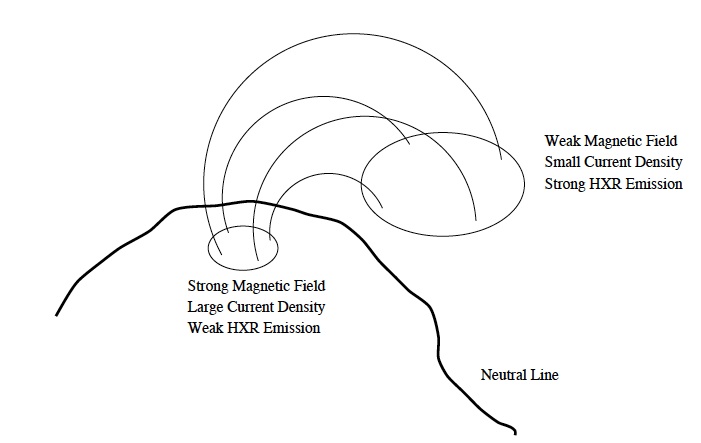
Li, Jing, Thomas R. Metcalf, Richard C. Canfield, Jean-Pierre Wülser, and Takeo Kosugi, What Is the Spatial Relationship between Hard X-Ray Footpoints and Vertical Electric Currents in Solar Flares?, ApJ, 482, 490-497 (1997) (ADS)

(click on the image for a larger version)
Date: 2009 October 27
Update: 2019 November 25
This cartoon explains the "cornucopia" effect, whereby one hard X-ray footpoint in a conjugate pair would be brighter than the other. The cornucopia is the converging field linking the weak field in the corona to the stronger fields in the two footpoints; these may have different convergence rates. This effect was described by T. Sakao in the finding that the weaker-B footpoint would be brighter, on the hypothesis that mirroring would be more likely to keep them at higher altitudes. There might also be a spectral effect, as also noted by Sakao.
This cartoon helps to explain this a bit, noting positively the suggestion that the vertical current density should be weakest in the weak-field footpoint. In principle of course the weakest field should be at loop top, most remote from the bulk of the currents that create the field. One could never guess that from this sketch! The key physics relates to the different mirror ratios resulting from different footpoint |B| values Of course, it depends upon your guess about the global field and where the "top" might be found.